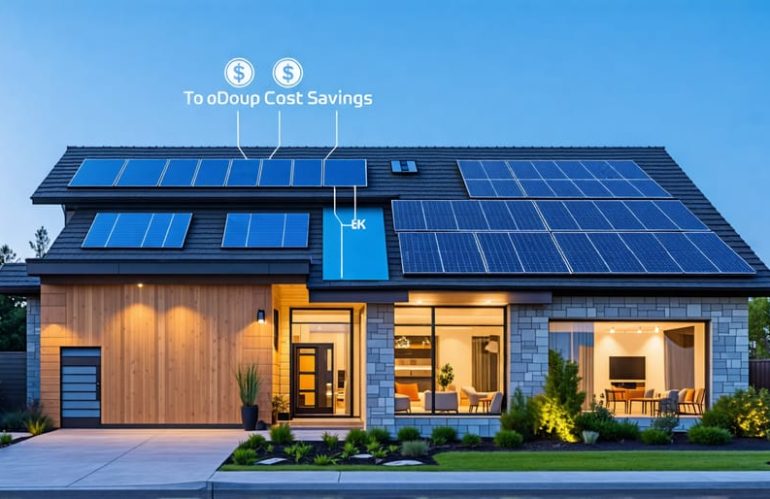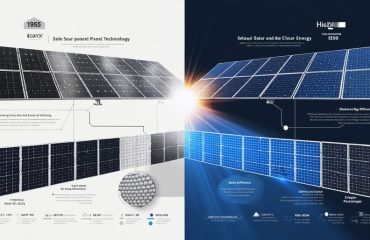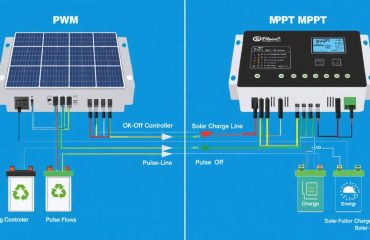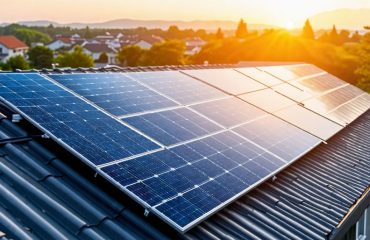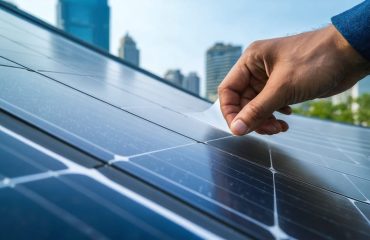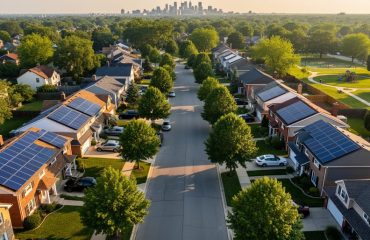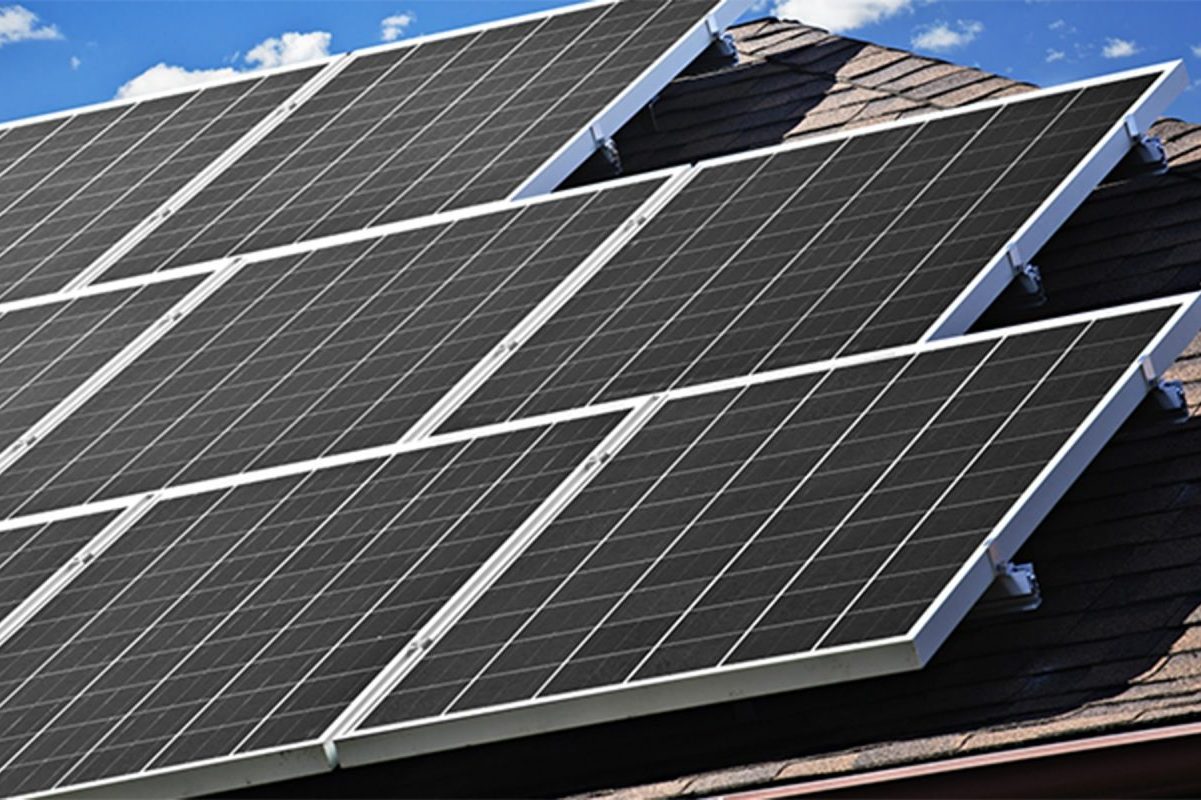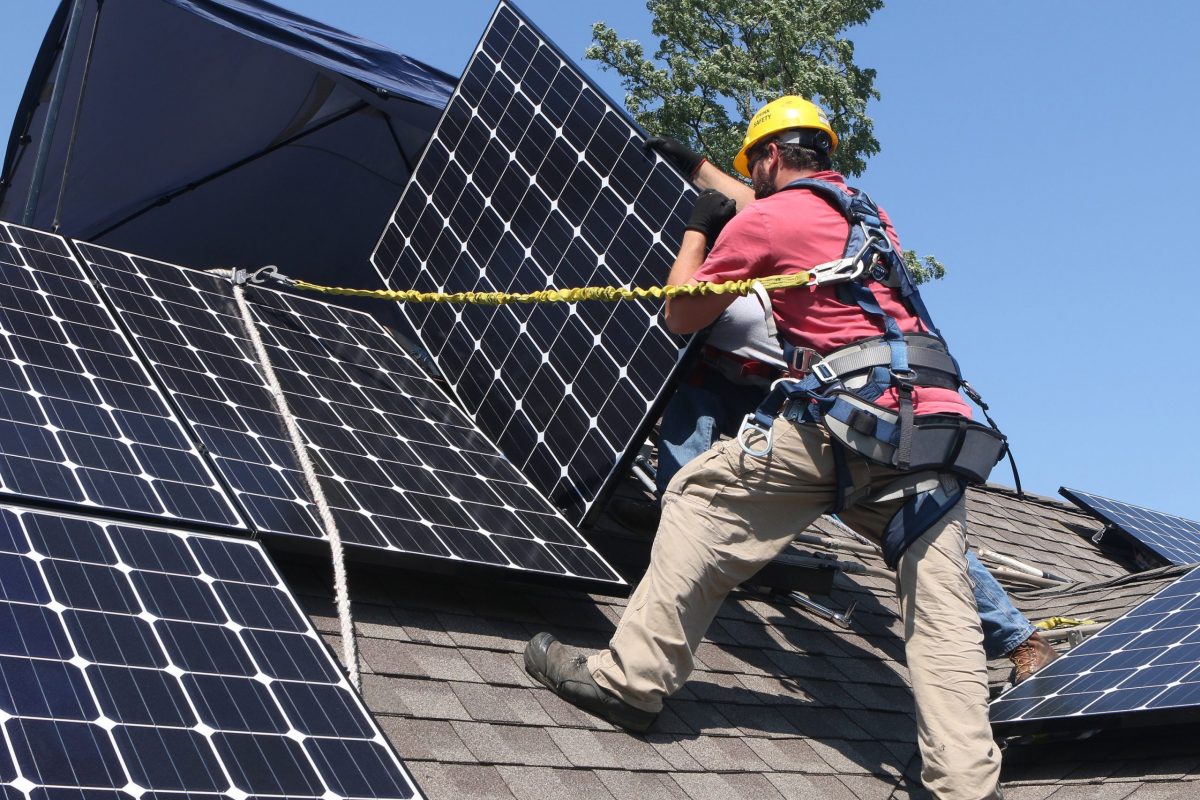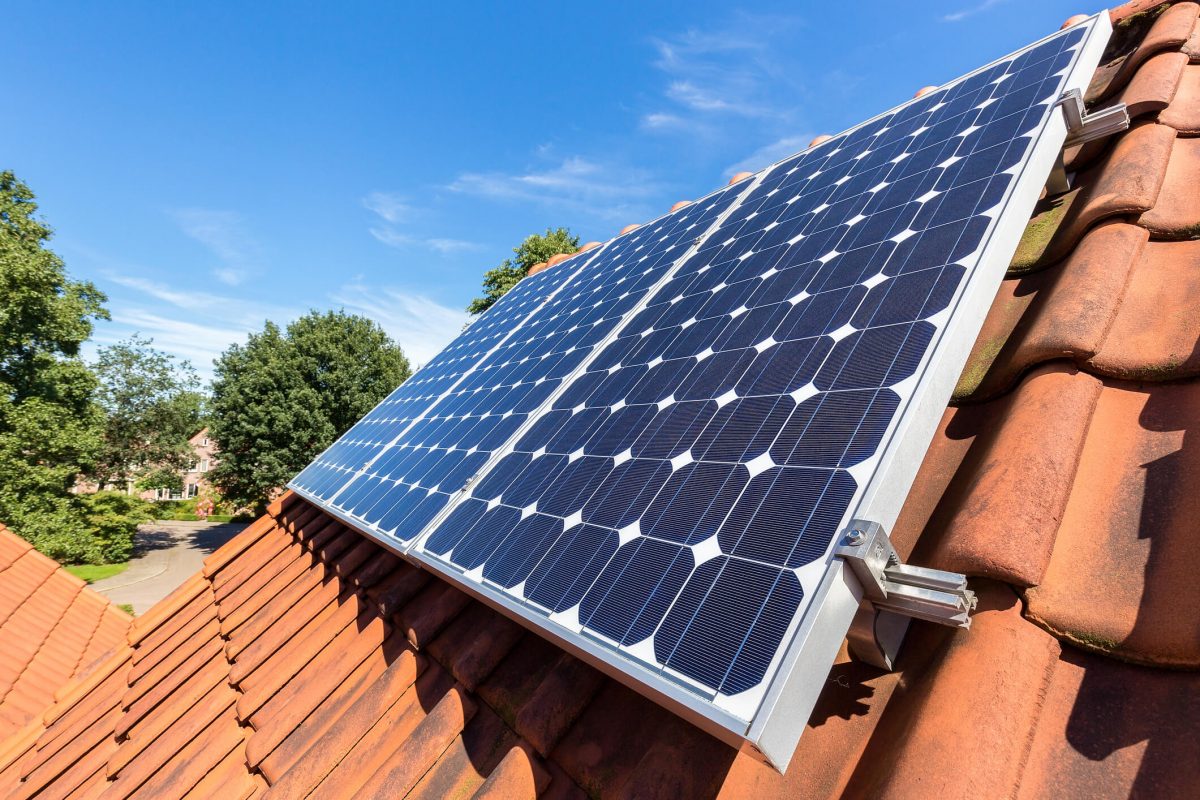Compare the costs and benefits of solar shingles vs traditional solar panels to make an informed decision for your home. While solar shingles blend seamlessly into your roof, they typically cost 30-50% more than conventional panels per watt. However, solar shingles can increase your home’s value by up to 4%, potentially offsetting the higher upfront investment. On the other hand, traditional solar panels are more affordable and efficient, producing 15-20% more energy than solar shingles. Ultimately, the choice depends on your budget, aesthetic preferences, and energy needs. Understanding the key differences between solar shingles and panels will help you select the best option for your eco-friendly home.
What are Solar Shingles?
Solar shingles, also known as photovoltaic shingles, are an innovative and visually appealing alternative to traditional solar panels. These cutting-edge roofing materials seamlessly integrate solar technology into your home’s roof, providing clean, renewable energy while maintaining the aesthetic integrity of your property. Unlike bulky solar panels, solar shingles are designed to look like ordinary asphalt shingles, making them virtually indistinguishable from a regular roof. Solar shingles work by harnessing the power of the sun, just like conventional solar panels. Each shingle contains photovoltaic cells that convert sunlight into electricity. When sunlight hits the solar shingles, the cells generate direct current (DC) electricity, which is then sent to an inverter. The inverter converts the DC electricity into alternating current (AC) electricity, which is the type of power used in your home to run appliances, lights, and other electronic devices. One of the key benefits of solar shingles is their sleek, low-profile design. They blend in seamlessly with your roof, providing a more aesthetically pleasing option for homeowners who want to embrace solar energy without compromising their home’s curb appeal. Additionally, solar shingles are easier to install than traditional solar panels, as they can be installed by roofing contractors during a new roof installation or replacement. This streamlined installation process saves time and reduces the need for additional specialized labor. Solar shingles offer the same energy-saving and environmental benefits as traditional solar panels. By generating clean, renewable energy, they help reduce your reliance on fossil fuels and lower your carbon footprint. Over time, the electricity generated by solar shingles can significantly offset your energy costs, leading to substantial savings on your utility bills. With their combination of aesthetic appeal, ease of installation, and energy-saving potential, solar shingles are an attractive option for homeowners looking to embrace sustainable living without sacrificing style or convenience.
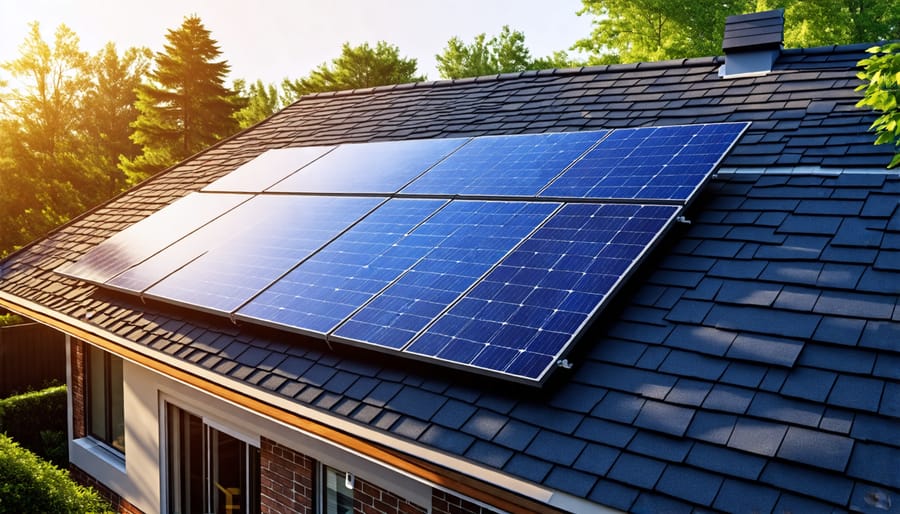
What are Solar Panels?
Solar panels are a popular and proven renewable energy technology that converts sunlight into electricity. These panels are typically installed on rooftops or ground-mounted systems, allowing homeowners to harness the power of the sun to generate clean energy for their homes. Solar panels consist of photovoltaic (PV) cells, which are made from semiconductor materials like silicon. When sunlight hits these cells, it knocks electrons loose from their atoms, creating an electrical current that can be captured and used to power homes and appliances. One of the main advantages of traditional solar panels is their affordability. As solar technology has advanced and become more widespread, the cost of solar panels has dropped significantly in recent years. This has made solar energy more accessible to homeowners looking to reduce their energy bills and minimize their environmental impact. Additionally, many states and local governments offer incentives and tax credits for installing solar panels, further reducing the upfront costs for homeowners. Another benefit of solar panels is their proven performance and reliability. Solar panels have been used for decades and have a track record of producing consistent, clean energy over their lifespan, which typically ranges from 25 to 30 years. They require minimal maintenance and can withstand a variety of weather conditions, making them a durable and long-lasting investment for homeowners. By installing solar panels, homeowners can significantly reduce or even eliminate their reliance on grid-supplied electricity, leading to substantial savings on monthly energy bills. As utility rates continue to rise, the financial benefits of going solar become increasingly attractive. Furthermore, any excess energy generated by solar panels can often be sold back to the grid, providing an additional source of income for homeowners.
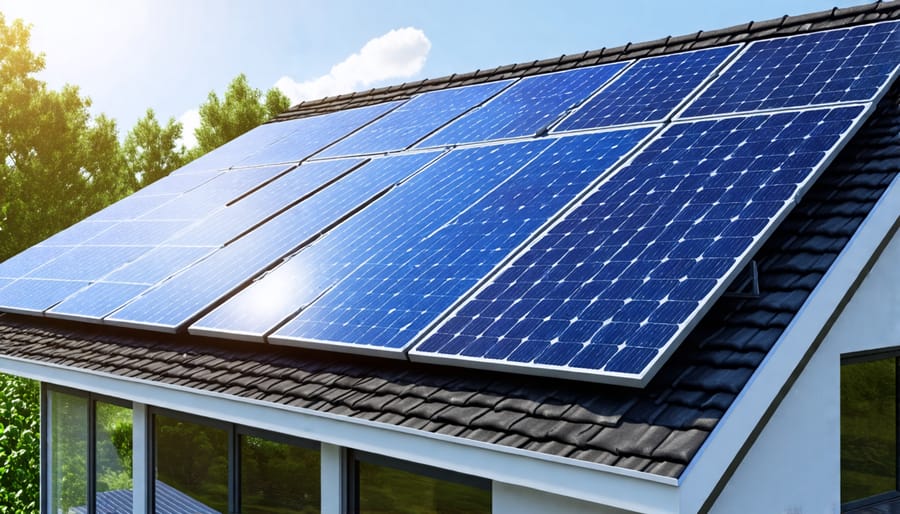
Cost Comparison: Solar Shingles vs Solar Panels
Upfront Costs
When it comes to upfront costs, solar shingles tend to be more expensive than traditional solar panels. On average, solar shingles cost around $21 to $25 per square foot, while solar panels typically range from $15 to $20 per square foot. For a standard 2,000 square foot roof, the costs to purchase and install solar shingles can reach $42,000 to $50,000, compared to $30,000 to $40,000 for solar panels. However, it’s important to note that solar shingles serve a dual purpose, acting as both a renewable energy source and a roofing material. This means that while the initial investment may be higher, you can save on the costs of a traditional roof replacement in addition to enjoying long-term energy savings. Ultimately, the choice between solar shingles and panels will depend on your budget, aesthetic preferences, and long-term financial goals.
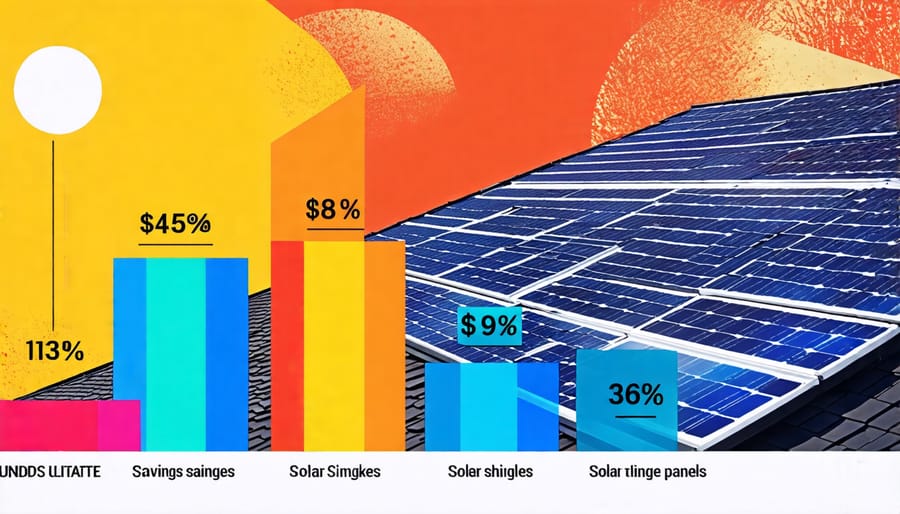
Long-Term Savings
When it comes to long-term savings, both solar shingles and solar panels offer significant benefits for homeowners. Over the lifetime of your solar energy system, you can expect to save tens of thousands of dollars on your electricity bills. Solar shingles typically have a longer lifespan than traditional solar panels, lasting up to 30 years or more. This means that your long-term savings potential is even greater with solar shingles. However, solar panels are no slouch when it comes to savings either. With an average lifespan of 25-30 years, solar panels can provide substantial savings over their lifetime. In fact, many homeowners find that their solar panel system pays for itself within 5-10 years through reduced energy bills. The return on investment (ROI) for both solar shingles and solar panels is impressive. According to the U.S. Department of Energy, the average ROI for a solar energy system is around 20%. This means that for every dollar you invest in solar, you can expect to save $5 over the lifetime of your system. Of course, the exact savings and ROI will depend on factors like your location, energy usage, and the size of your solar system. But regardless of these variables, one thing is clear: investing in solar energy is a smart financial decision that can provide long-term savings and a healthy return on your investment. Whether you choose solar shingles or solar panels, you can feel good about reducing your carbon footprint while also putting money back in your pocket for years to come.
Factors Affecting Solar Costs
Several factors can impact the overall cost of installing solar shingles or traditional solar panels on your home. The size of your home and the amount of energy you typically consume will determine the number of solar shingles or panels needed, directly affecting the total cost. Your geographic location also plays a role, as solar installation costs and incentives vary by region. To get an accurate estimate for your specific situation, it’s best to consult with professional solar installers who can assess your home’s unique requirements. They will take into account your roof’s size, orientation, and condition, as well as your household’s energy needs and local climate conditions. By obtaining quotes from multiple installers, you can compare prices and find the best solution for your budget and energy goals. Keep in mind that while the upfront cost of solar shingles or panels may seem substantial, the long-term savings on your electricity bills and potential increases in your home’s value can make the investment worthwhile. Additionally, many states and utility companies offer incentives, rebates, and tax credits that can significantly reduce the initial cost of going solar.
Conclusion
In conclusion, when considering solar shingles vs solar panels, both offer significant cost savings and environmental benefits. Solar shingles provide a sleek, integrated look while solar panels are a more affordable option. The long-term financial rewards, including reduced energy bills and potential tax incentives, make both choices attractive for eco-conscious homeowners. Ultimately, the decision depends on your specific budget, aesthetic preferences, and energy needs. By investing in solar technology, you can take a proactive step towards a more sustainable future while enjoying the benefits of clean, renewable energy. To determine the best solution for your home, consult with a reputable solar installer who can provide personalized recommendations and help you navigate the installation process.

